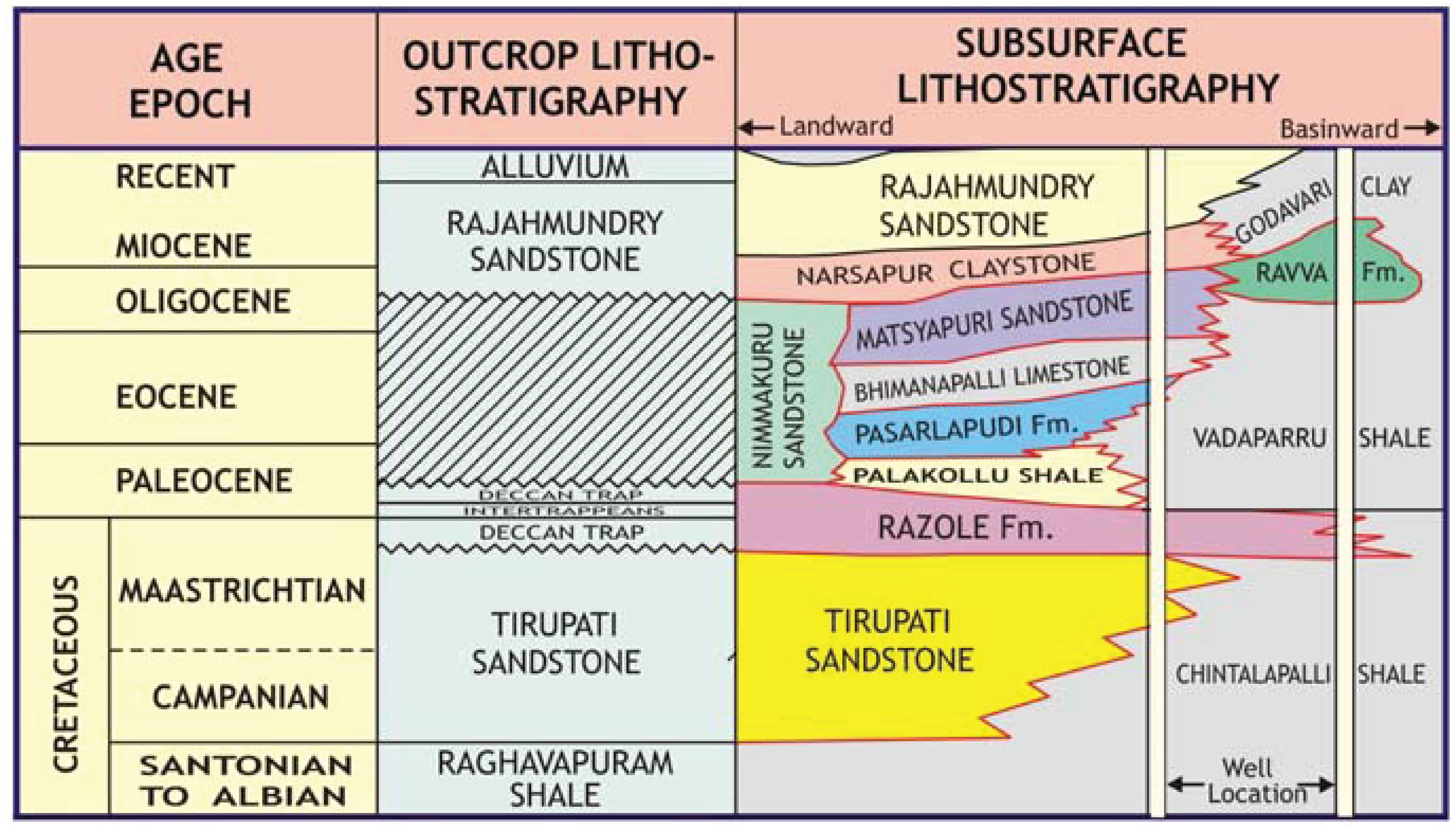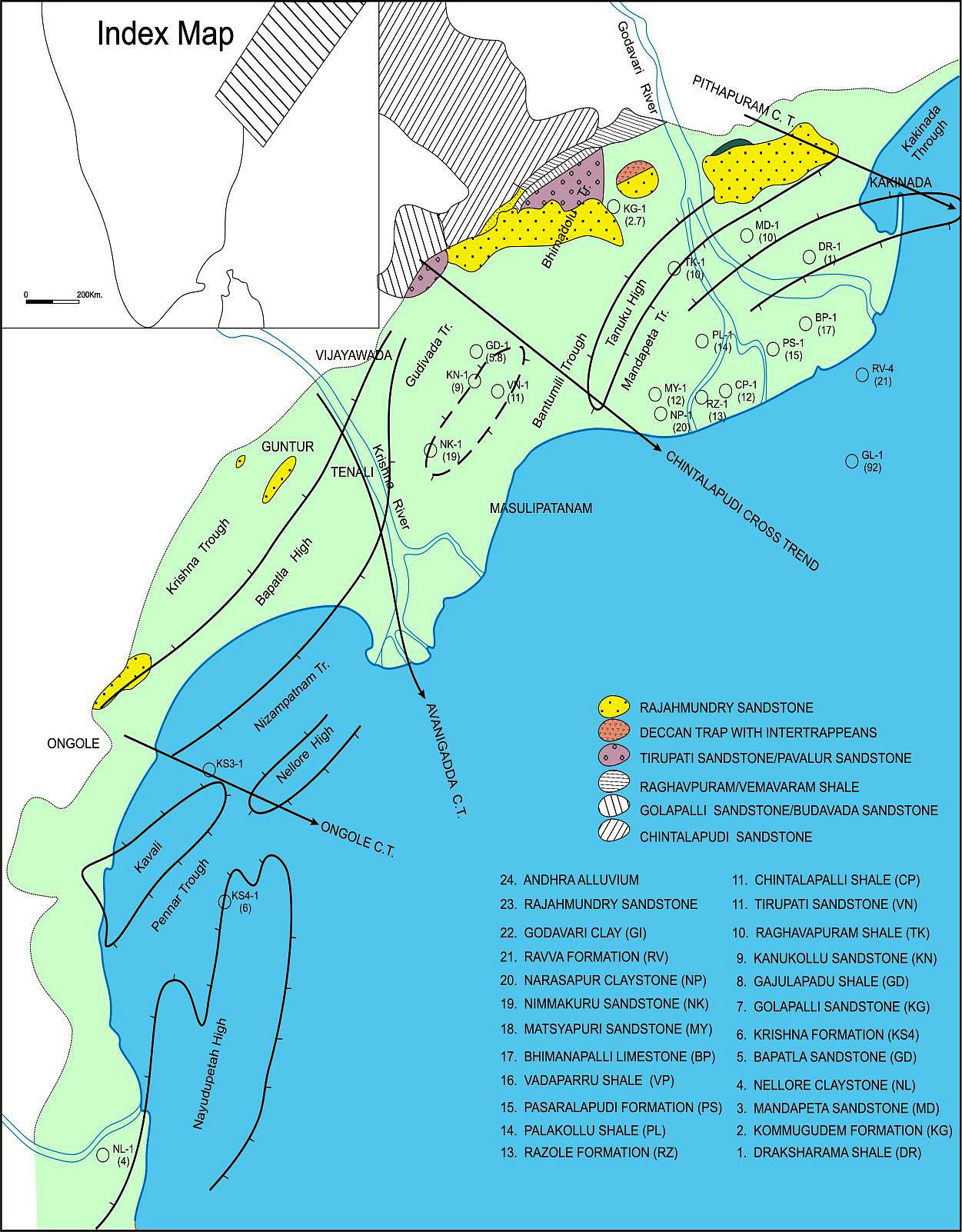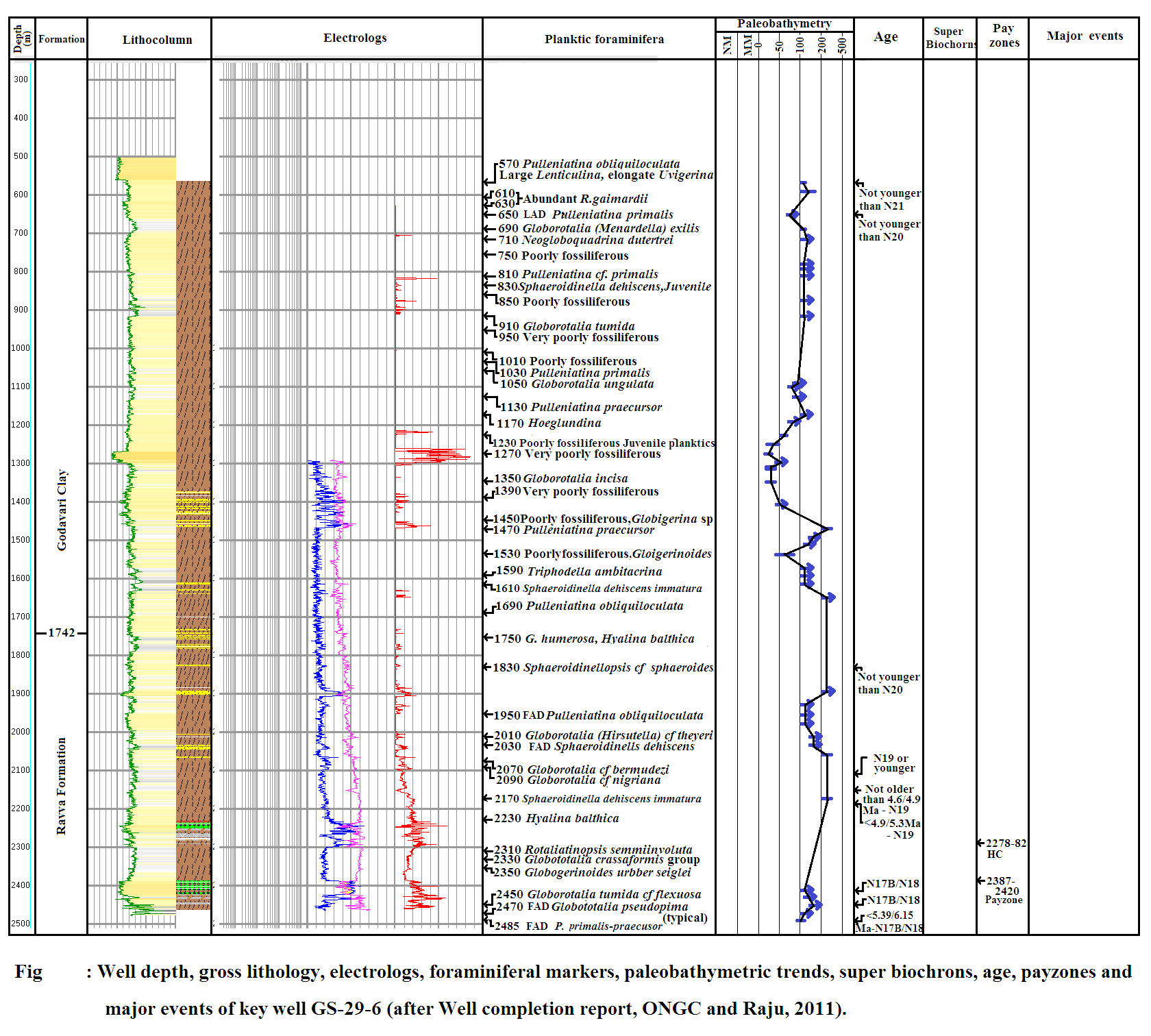Godavari Fm
Type Locality and Naming
The type section is in the Well G-A-A (depth interval: 0-2110 m). The hypostratotype is in the Well GS-B-AA (depth interval: 0-2750 m). It was named after the by ONGC team steered by Venkatarengan et al. (1993) adopted and issued as Document-VII bvillage Matsyapuri KDMIPE, ONGC, Dehradun (1993). [Original Publication: Venkatarengan, R., Rao, G.N., Prabhakar, K.N., et al., (1993b) Lithostratigraphy of Petroliferous Basins, Document VIII, Krishna Godavari Basin, KDMIPE, ONGC Publication, pp. 1-29.]. Reference well: Well GS-2-AA, Interval 0-2750 m and thickness is 2750 m.
Synonyms: Godavari Clay
[Figure: Generalized Late Cretaceous-Cenozoic lithostratigraphy transect, Krishna-Godavari Basin. From Keller et al., 2011, Jour. Geol. Soc. India, 78:399-428, their Fig. 2]
[Figure: Map showing the locations of designated holostratotype section for the formation in the KG Basin (After ONGC, Pandey and Dave, 1998) in Raju et al., 2021, ONGC Bulletin, Special Issue, Vol. 56, No. 2]
Lithology and Thickness
Claystone. This unit consists of predominantly claystone with minor sand and siltstone bands. The clay/claystone is grey to dark grey, soft, plastic, with shell fragments and foraminifera. The sandstone is very fine- to medium -rained, moderately to ill sorted, subangular to subrounded. In reference section, contains mainly clay/claystone with occasional sand bands. The clay is dark grey to black, soft non-calcareous to calcareous, with broken shell fragments. The sand is colorless medium to coarse grained, occasionally pebbly subangular to subrounded, poorly sorted with rare glauconite.
It has a thickness varying from 2110-2750 m.
Relationships and Distribution
Lower contact
Unconformable with the Ravva Fm (Basinal) or the Rajahmundry Fm sandstone (outcrop); although the latter sand might have interfingering relationship, because some articles indicate that Godavari is more basinal whereas Rajahmundry Fm is more landward.
Upper contact
Not defined. Continues during Holocene highstand on shelf?
Regional extent
It is extensively developed in parts of Krishna-Godavari Basin.
GeoJSON
Fossils
Foraminifera- Pulleniatina finalis, P. obliquiloculata, Sphaeroidinella dehiscens, Globorotalia tumida, Gr.cultrata, Gr. plesiotumida, Gr. merotumida, Globigerinoides extremus, Gs. trilobus, Gs. ruber, Neogloboquadrina acostaensis, Spaheroidina bulloides (Raju and Chidambaram, 1985).
Age
Depositional setting
Outer neritic-Bathyal
Additional Information
[Figure 1: Lithocolumn, well logs, foraminiferal datums and paleobathymetry of Godavari Fm in well GS-29-6 showing lateral variation (after well completion report, ONGC and Raju (2013)]


